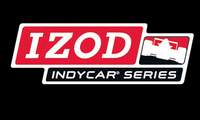IndyCar - Engine Rules Precedent Set, Won't Be Altered
 |
Editor's Comment: This is a perfect illustration of a 'Ready Shoot, Aim' decision and typically incoherent. Had IndyCar not had their heads in the up and locked position, by trying to merge unproven engines with unproven chassis' in the first place, and now are simply trying to save what little commercial credibility still exists in the series, we wouldn't be having this conversation. Unfortunately, as usual, the competitor and the fan always pays the price one way or the other.
LONG BEACH, Apr. 14, 2012: INDYCAR vice president of technology Will Phillips said the rules regarding a penalty for an unapproved engine change won't be altered this season, and foresees them remaining in place through the current engine cycle.
Rules 15.5.1 and 15.6.1 outline the penalty for a change-out if the engine that has not reached its minimum mileage threshold as 10 grid positions. Fourteen 14 entries will incur the penalty for the 85-lap Toyota Grand Prix of Long Beach on the 1.968-mile, 11-turn street circuit April 15.
It's an anomoly as Chevrolet changed out engines in its 11 entries in a precautionary move April 12. Lotus engines in the Nos. 6 and 22 cars driven by Katherine Legge and Oriol Servia, respectively, were swapped out for fresh 2.2-liter, twin-turbocharged V-6 power plants before the first IZOD IndyCar Series practice session April 13. Additionally, INDYCAR announced April 11 it would levy the penalty on the No. 7 Lotus Dragon Racing car driven by three-time Long Beach Indy car winner Sebastien Bourdais.This is the first year of manufacturer competition since 2005, with the three engine suppliers utilizing a 2.2-liter, turbocharged (Chevrolet and Lotus twin turbochargers) V-6 platform. All engines are fueled by E85.
"We need them to make their engines last the length that we have (established)," Phillips said. "We had two good races, a 7 percent failure rate, and this weekend was something different. GM had one failure at Sonoma, and have chosen to have (the engines) changed in a pre-emptive measure. None of them might have gone, or all of them, so that was their choice.
"It might seem very harsh now, but looking four, five years down the road for setting the regulations, the basis would be same. We can't be 'let this go, let that go' to start with, because then you can't tighten it up. It's far better to set the ground rules, have consistent penalties, let you know where you stand. We've set the precedent, and we need to stick with it."
At its core, the regulations that the engine manufacturers agreed to is about cost containment -- for Chevrolet, Honda and Lotus and their customers. A full-season engine lease (five engines over the course of the 16-race season, including a fresh engine for Carb Day and the Indianapolis 500, with a 10,000-mile limit for testing and race weekends) is $690,000, which is more than $250,000 lower than 2011 with a single supplier.
"If a manufacturer comes in with short-life motors, it will cost an awful lot of money to do that, and it's about cost containment," Phillips said. "If they want the lease at $690,000, it's not because you're getting 25 engines, not short-life. The manufacturers need that template to come back in."
Though the perception is the team/driver are being the ones disciplined in the form of grid positions, Phillips argued it affects both manufacturer and team. Engines are homologated and each entry receives from INDYCAR a corresponding engine at random from a pool.
"If there are no teams, the manufacturer can't run their product. And if there are no manufacturers, the teams have nothing to run," Phillips said. "The teams and manufacturers came together as a team, as was shown in all the testing that happened. They did all their testing together and shared all the information. That was part of the program that GM sold to their teams to want those teams to be in their stable. When you see a car, a driver, go back go back 10 spots on the grid, it's also an engine – a GM, a Honda or a Lotus – going back 10 spots on the grid."